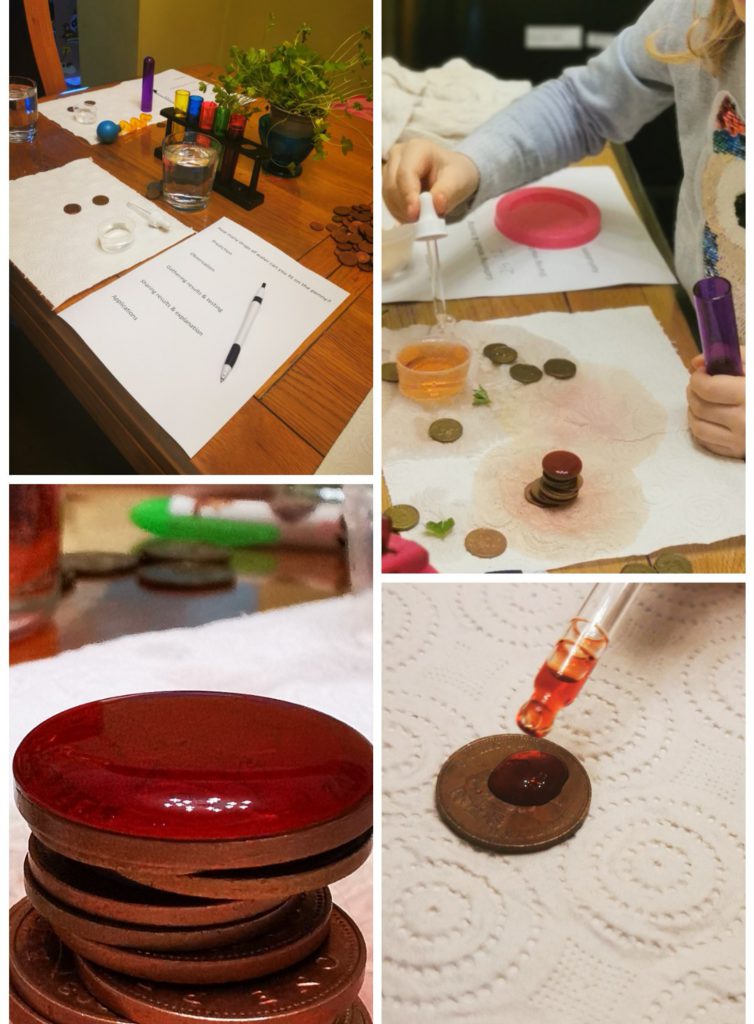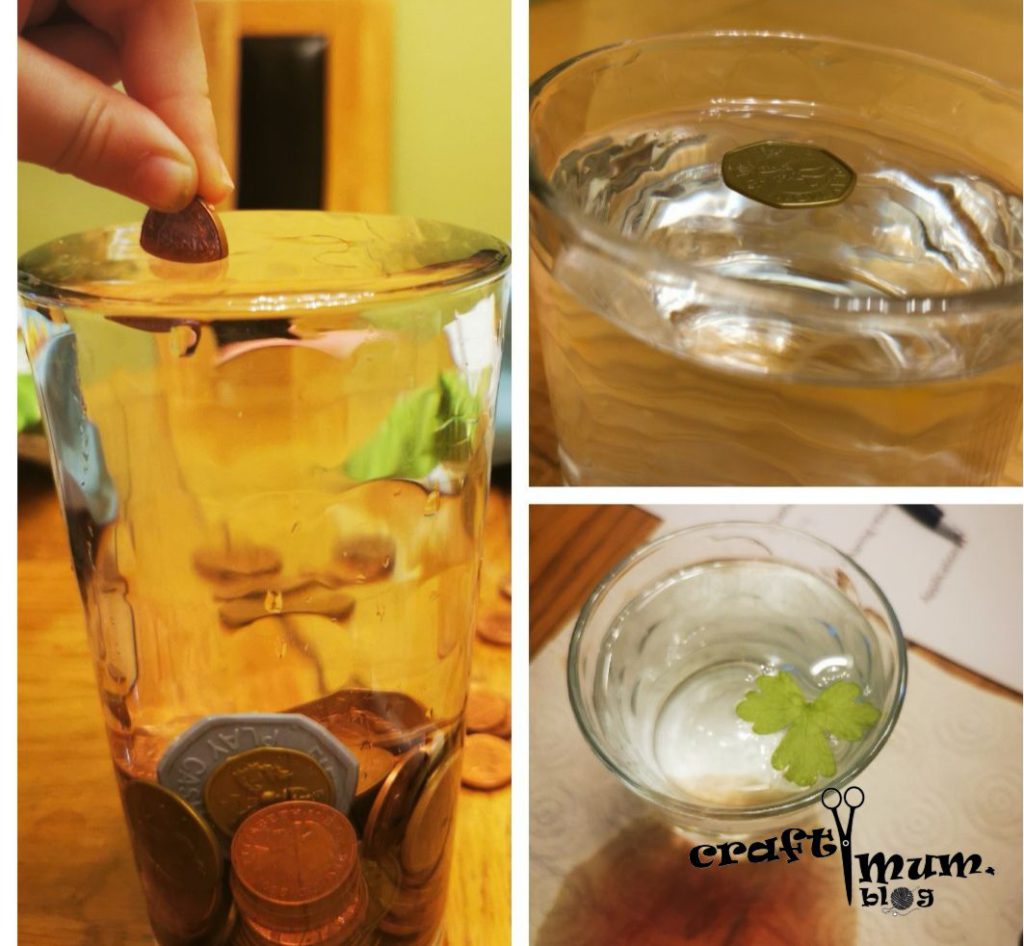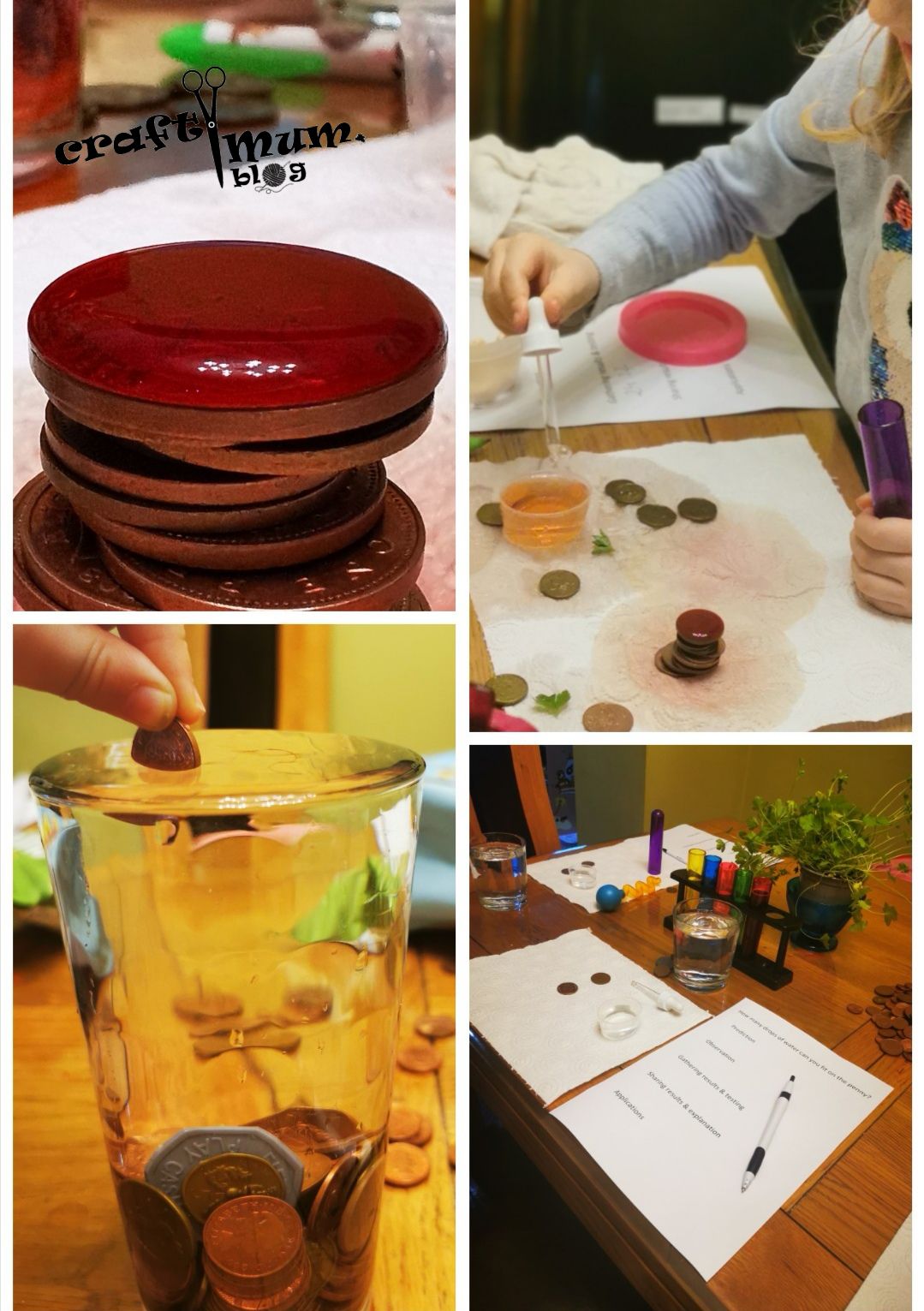A great way of teaching kids about water surface tension with just a bunch of coins (plastic or real), water and a dropler. I did this with my 5 year old and she really enjoyed playing and testing, but a more understanding of the concepts would be achieved with older kids so I will definitely repeat the experiment in a couple of years.
Prepare the working area. Have napkins or towels handy. Have a few coins handy, one glass with water, a little container with colored water (optional but adds to the fun and makes the process easier to observe) and a dropler.
Make an experiment sheet to write down your findings. I used two one for the drops on the coin and one for the coins in the glass experiment.
The sheet should contain:
1. The question – How many drops of water would fit on the coin?
2. Prediction – hypothesis
3. Testing & results
4. Explaination of results
5. Applicability
Before you start get them to practice what they are supposed to do. For example we had to learn on a paper towel how to gently squeeze to get the drops out, keep a steady hand, not touch the surface and aim for a specific area. This requires a bit of practice and was great for fine motor skills.

Once they are confident enough start. Don’t forget to inform yourself on the topic and how to best explain it to kids. I was not great at physics and although I sort of knew what would happen I wasn’t capable of naming the forces or explaining them.
Here are some of the information points I have used. I am not an expert, there could be some inaccuracies but I hope not.
– Surface tension is the property of the surface of a liquid to resist to an external force.
– This is a result of the forces between similar molecules. When close, they tend to group (cohesion) and form a shape with as little surface contact as possible – spherical shape.
– The molecules form a force similar to an invisible membrane at the surface of the liquid where they meet the air.
– If an object/body is too heavy it can break the water tension allowing it to sink, but denser objects than water can still float.
Experimenting you will see that the number of drops fitting on the coin is likely larger than what they predicted. This is because the water starts taking the shape of a dome to achieve the least amount of surface area possible.
The second part of the experiment is showing another example of water tension in action. This time by placing objects on the surface and see if they break the water tension or float. You can show how the same object can float or sink depending on the angle they are placed on the water. The parger the area of contact the best the chance of not breaking the tension and therefore float.
Once you have done that you can ask the children to dump as many coins as they can in an almost full glass of water. They will soon observe the same (discreet) spherical shape taking form and coming above the brim of the glass due to the cohesion and surface tension of the water.

In terms of applicability the examples I came with are from nature like water striders as well as how we dive in the water by creating an entry point to break the surface and avoid the very familiar sting of a belly flop.
After the experiment and the water play we watched a couple of slow motion dives and belly flops (there are some good ones filmed from under the water as well as from above) as well as some water striders on YouTube.
Happy experimenting. If you liked this one try the friction experiment. Please be forgiving, I am not a science teacher.
